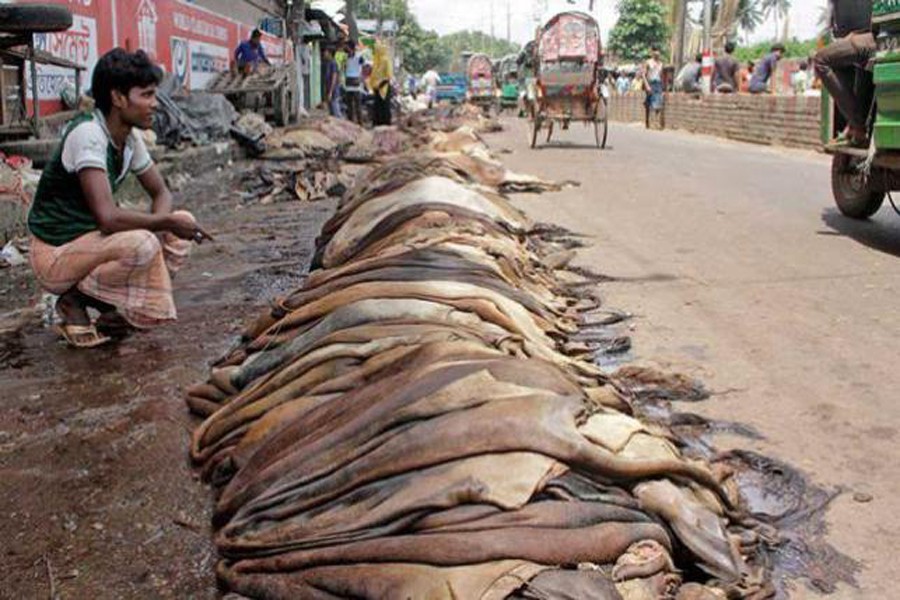The developments involving the prices of rawhide and skins of sacrificial animals this year have been unprecedented and beyond any logic. It was more or less everybody's guess that during the Eid-ul-Azha, the second largest religious festival of the Muslims, this year far lesser number of animals would be sacrificed across the country because of the Covid-19 pandemic. Severe and consecutive floods in most parts of the country and a very limited number of temporary cattle markets in Dhaka and widespread economic hardship are among other factors that contributed to the lower demand for sacrificial animals. However, the number of animals, according to livestock officials, sacrificed during the last Eid was more than anticipated one but lower than that of the earlier years.
The availability of rawhide and skins during such a situation would be in lesser volume than that of the previous years. In that case, the rawhide and skins were supposed to fetch higher prices. But that did not happen. The government on the eve of Eid had fixed buying prices -- the lowest ever -- for rawhides and skins, but those were largely ignored. The rawhide market had gone haywire. The seasonal rawhide traders could not sell their merchandise even at half the government-fixed prices. Failing to sell some traders dumped rawhide and skins by the roadside or garbage yards and went home utterly disappointed.
Last year, a similar situation had arisen when seasonal traders had dumped thousands of rawhide pieces underground or thrown into rivers because of the price-collapse. This development does highlight the fact that there are some built-in systemic problems in the market. Yet the relevant authorities have never tried seriously to resolve those. On the eve of every Eid-ul-Azha, the Ministry of Commerce (MoC) does hold a meeting with wholesale leather traders and tanners and fix rawhide procurement prices. The government also makes arrangements for trouble-free loans for the traders and tannery owners concerned. But what has always been lacking is the official monitoring of the implementation of the decisions.
Another folly on the part of the MoC was that it had made unnecessary delay in deciding on the rawhide export. Under the prevailing circumstances, the decision was an appropriate one, but it had come only a couple of days ahead of Eid. Traders did not get enough time to make contact with potential buyers. Had the decision been announced some weeks back, the rawhide market scenario could have been a different one.
It has become more of a tradition on the part of the traders and tanners to engage in a blame-game for the collapse of the rawhide prices on the occasion of Eid-ul-Azha. A section of people tends to blame an invisible syndicate while traders hold the tanners responsible for not procuring rawhides in sufficient volume. The tanners, in their turn, blame the relocation of tanneries in the Savar tannery estate without ensuring the essential facilities such as effluent treatment plant and waste dumping ground. Bangladesh's failure to comply with certain environmental requirements has been one of the reasons for the decline in its leather and leather goods export in recent years.
There is no denying that tannery relocation was a necessity, but the relevant authorities have handled the entire issue very ineptly. The Savar tannery project is a huge one. Its implementation should have been done in far more oraganised and efficient manner. However, let bygone be bygone -- from now on, the government needs to be very serious about the Savar tannery issue and get all the relevant problems fixed as early as possible. Undoubtedly, the country's leather market is very much dependent on the efficiency level of the tanneries.


